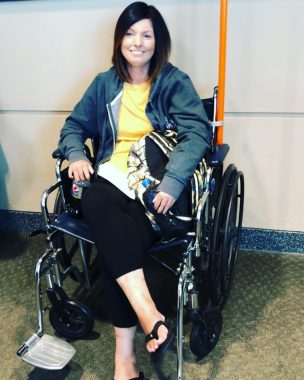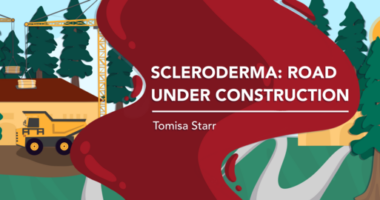Using a Wheelchair Forced Me to Face the Reality of Scleroderma
A columnist recognizes why she felt so uncomfortable being seen in a wheelchair

“I do not want my picture taken while I’m in my wheelchair, please!”
These were the first words out of my mouth at my local Stepping Out to Cure Scleroderma walk in 2017. It may sound vain not to want anyone to snap a simple photo of me. But I felt uncomfortable with it.
Although I was diagnosed with scleroderma back in 2001, the 2017 walk was the first one I was able to attend. I’d encountered roadblocks at every turn in my disease journey, including a major setback concerning my lungs in 2009, which prevented me from going to events. So many things in my life have been hindered by scleroderma.
In 2017, I was beyond pumped to finally attend the walk and help raise awareness and funds for important disease research. The National Scleroderma Foundation did a fantastic job setting it up, and the turnout was unbelievable. Unfortunately, two days before the walk, I fell and broke my pinky toe.
I had no idea that breaking your toe could hurt so bad! I could barely walk, which was a big problem ahead of the walking event.
On the day of, my toe was still feeling horrible, and I could barely make it to the restroom on my own. I’d need to use my wheelchair, and I was not happy about it. As the walk began, I sat down in my chair, and my dad started to push me behind the rest of my team.
I felt so uncomfortable being in a wheelchair because of my dumb toe. To others, it probably wasn’t a big deal, but I was extremely embarrassed. And to make matters worse, as we made our way through the designated route, volunteers took pictures of walkers and their teams. My stomach sank.
I didn’t want any pictures of me in a wheelchair, and I made that abundantly clear when the first volunteer stopped us to snap a photo. I admit that my reaction to him politely asking us to smile for the camera could have been a little nicer than, “Absolutely not! Do not take a picture of me!” I was just panicked about how I would get through the walk without being in any photos, which would inevitably be posted all over social media the next day.
When we finally finished the walk and I was able to stand on my own two feet again, I felt so much better.
I couldn’t tell you why I was so adamant about not having evidence of me in my chair. Although scleroderma causes my hands to look deformed and my mouth to be small and tight, I’m usually extremely comfortable in my own skin. I rarely feel embarrassed about looking different. But being in the wheelchair hit me in a way I’d never experienced while living with scleroderma.
Facing my reality
Three days later, while writing a post recapping the event, I finally figured it out. My issue wasn’t with other people seeing me in my wheelchair; I just didn’t want to see myself in one! I dreaded seeing myself as incapable and dependent upon others.
I couldn’t face the reality that needing a wheelchair full time is a very real possibility for me. I don’t know how I’ll cope if my condition progresses to that point.
What I do know is that I’ll never again behave like I did at the walk. I’m better than that. I promise to face any challenge, no matter how difficult, with positivity and strength.
Scleroderma may change me physically and steal much of my independence and abilities. I may eventually be unrecognizable because of the disease. But I will never allow it to change who I am at my core. My heart, mind, and soul can never be taken away from me.

Amy poses in her wheelchair at the airport in 2019. She has moved past her insecurities and now comfortably uses a wheelchair to cover long distances. (Courtesy of Amy Gietzen)
Note: Scleroderma News is strictly a news and information website about the disease. It does not provide medical advice, diagnosis, or treatment. This content is not intended to be a substitute for professional medical advice, diagnosis, or treatment. Always seek the advice of your physician or other qualified health provider with any questions you may have regarding a medical condition. Never disregard professional medical advice or delay in seeking it because of something you have read on this website. The opinions expressed in this column are not those of Scleroderma News or its parent company, Bionews, and are intended to spark discussion about issues pertaining to scleroderma.








Leave a comment
Fill in the required fields to post. Your email address will not be published.